![Product Launch Checklist: A Step-By-Step Guide [+ Top Tips] cover](https://blog-static.userpilot.com/blog/wp-content/uploads/2023/11/product-launch-checklist-a-step-by-step-guide_bdfb8cc53833f4652f53371a2fa5c402_2000.jpg)
Try Userpilot Now
See Why 1,000+ Teams Choose Userpilot

What is a product launch checklist?
A product launch checklist is a list of tasks that you need to complete to successfully launch a new product or feature.
Its main goal is to help you plan the efforts of the product, marketing, and sales team to maximize the impact of the launch.
1. Conduct market research
The aim of market research is to assess what products are available in the market, what problems they address, how successful they are and what’s the demand.
More importantly, it helps you find gaps in the market that your future product could fill.
What methods could you use for market research?
Online analytics is a good start. Tools like Google Trends allow you to find out what prospective users are searching for online. Surveys are another popular method. Qualitative analysis of the competitive landscape can also provide invaluable insights.
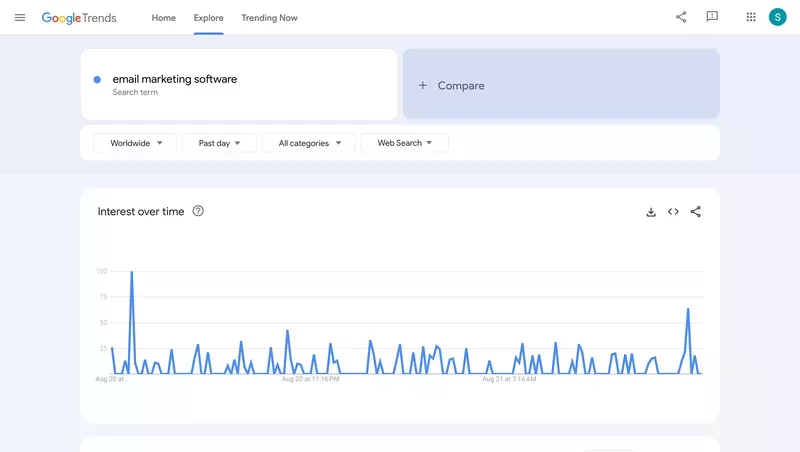
2. Research your target audience
To succeed, your product needs to address genuine user needs, wants, or pain points. To identify them, research your target audience thoroughly.
Specifically, your objective here is to find out what products they’re currently using to solve their problems, how well the solutions work for them, and what’s missing about them that you could potentially improve.
How can you gather such insights?
Customer interviews and focus groups are effective methods to gain qualitative insights about your prospective customers. They give you more flexibility than surveys so you can follow up on ideas that your interviewees bring up.
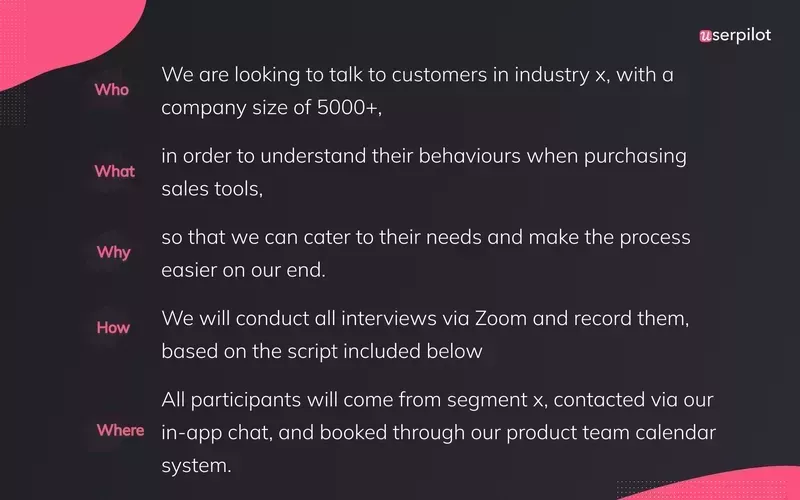
3. Brainstorm and validate product ideas
Having identified user problems, it’s time to generate ideas on how to solve them.
There are two schools of thought here: you can either copy and improve on your competitors’ solutions or think of a completely new way to solve the problem.
The latter is riskier but potentially more rewarding as it can truly differentiate your product in the market.
Whichever path you choose, validate the idea before you build them. In this way, you reduce the risk of building something that nobody buys.
The most effective idea validation method is selling it. If you manage to find buyers at this stage, you’re golden.
How can you do it without having an actual product?
Try the Wizard of Oz technique.
Create a prototype that will make users believe the product is ready. Start with a landing page with virtual demos and use paid ads to drive traffic. If users sign up, do all the work manually and track user engagement and retention to assess how much traction the idea is getting.

4. Develop the product to satisfy user needs
Once the idea is validated, it’s time for the engineering and development teams to do their magic.
Most teams these days follow Agile frameworks, like Scrum, and deliver work in small increments. The benefit of this is that at each iteration you have a bit of working software that you can test and further validate with customers.
5. Create a go-to-market strategy for the product launch
As the developers are crunching out the code, your marketing team should be working on the go-to-market strategy.
What does the GTM strategy cover?
For starters, it should include your positioning statement spelling out where your product sits in the market and how it compares to competitors. Pricing is part of positioning.
The GTM strategy also outlines the details of the marketing campaigns. This is a good time to create promotional content and marketing collateral.
Finally, it also sets out the product launch details, like the launch date.
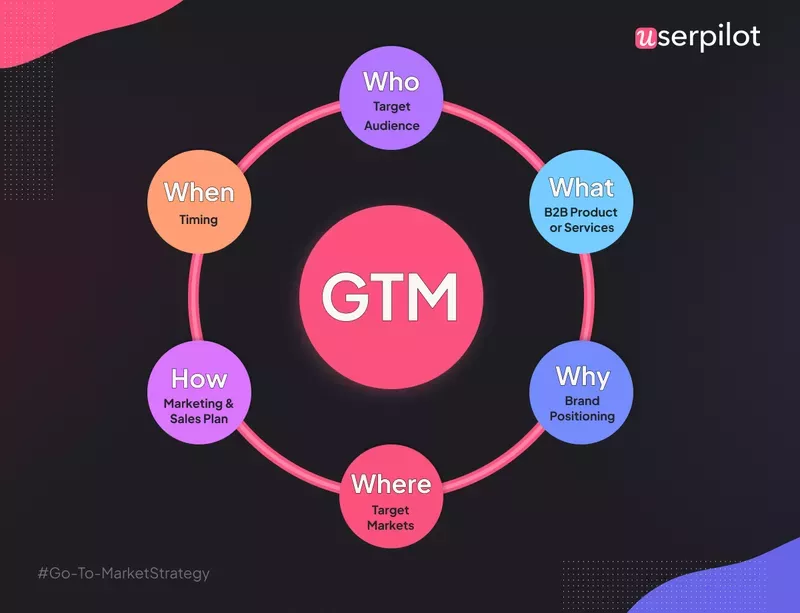
6. Align your customer support team to assist new users
No matter how intuitive and user-friendly your product is, your users will always need help, and so your customer support team needs to be ready.
To start with, ensure that they know the technical details of the product so that they know how to assist the customer.
By keeping them in the loop from the beginning, you also give them enough time to develop the necessary after-hours support resources, like manuals, video tutorials, or resource center modules.
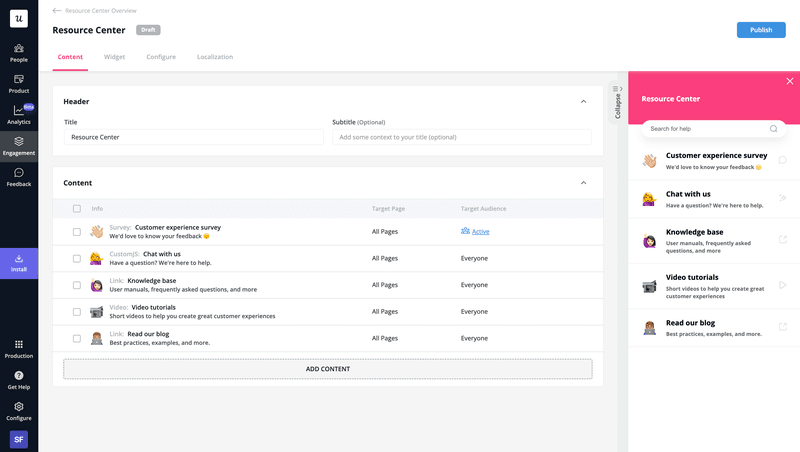
7. Analyze the performance of the product launch
Your work doesn’t stop on the launch day.
As your product is out, start tracking its performance to inform future iterations. This could be done by tracking user behavior and collecting customer feedback.
In addition, analyze how well the actual launch went. Gather your teams to reflect on which aspects were successful and which needed improvement.
Make sure to document the reflections so that your team members, both existing and new, can use the insights to improve future launches.

New feature launch/product enhancements checklist
Releasing a new feature or update is slightly less complex than a squeaky new product.
One thing that makes it easier is that you already have a product in place and can use your existing user base for ideation, validation, and iterative improvement.
1. Analyze feature requests and feedback received from customers
Ideas for new features or necessary updates often come from your customers, so make it easy for them to submit their requests and feedback.
For example, enable a feedback widget in your resource center so that users can provide feedback or requests whenever they wish. On top of that, run regular in-app surveys to gather insights and keep interviewing your customers to identify new opportunities.
Be critical of their ideas though. Take time to identify the true reasons behind the requests. It may turn out that you already have such functionality but users can’t find it because your onboarding sucks.
As with new products, don’t rush to copy your competitors because all you’re going to achieve is feature parity. Work on innovative solutions to challenges.
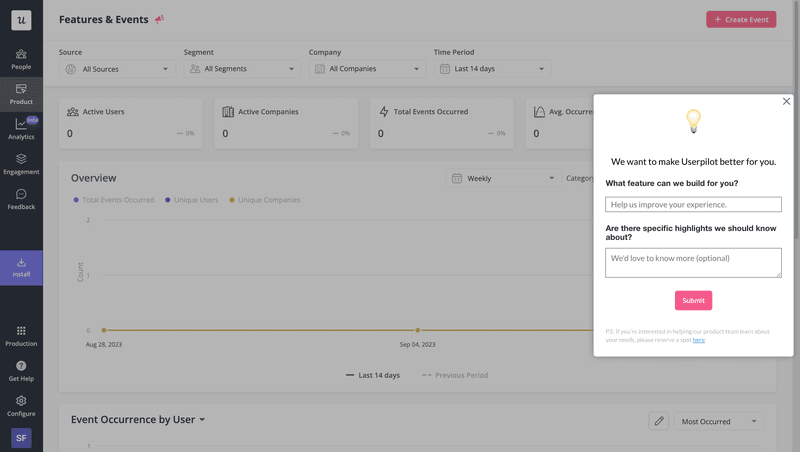
2. Prioritize features with the greatest impact on customer satisfaction
Having gathered feature ideas, it’s time to prioritize them to choose those that will have the biggest impact – on your customer and your business.
There are a number of prioritization techniques you can use for that. Popular frameworks include Kano, Cost of Delay, RICE, and Value vs Effort.
Which one you choose depends on product maturity, how quickly you want to make a decision and your organizational culture.
For example, the Kano Model is very customer-centric but used mostly early on in product development, while the Cost of Delay prioritizes business goals.
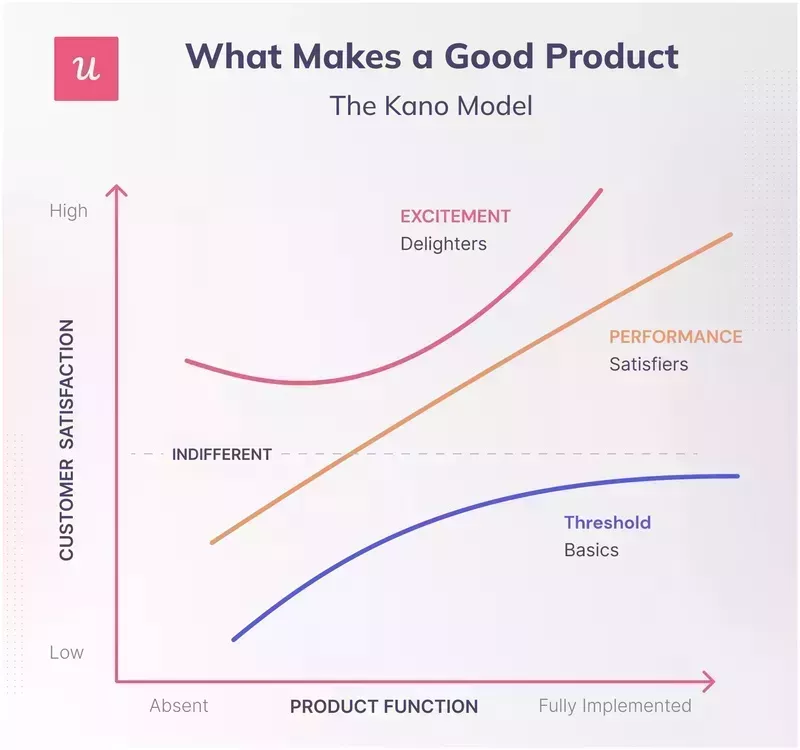
3. Develop the feature to enhance product functionality
At this stage, the product team steps back and hands over the reigns to the development team which builds the feature.
This process is very similar to building a new product. What may make it more complex is the existing interdependencies between features and technical debt.
4. Conduct beta testing for a successful launch
Before you release a new feature or an important update, beta test it thoroughly with a small sample of users first.
By doing so, you reduce the potential impact, for example, if the release is buggy. If, on the other hand, the new functionality sweeps the users off their feet, they will help you promote it for you via word-of-mouth.
Most importantly, you will be getting valuable feedback from real users testing the product in real life.
How do you recruit your beta testers?
You can reach out to them with an in-app message and invite them to take part in the test. Make sure to select a representative sample of your user population for the test.
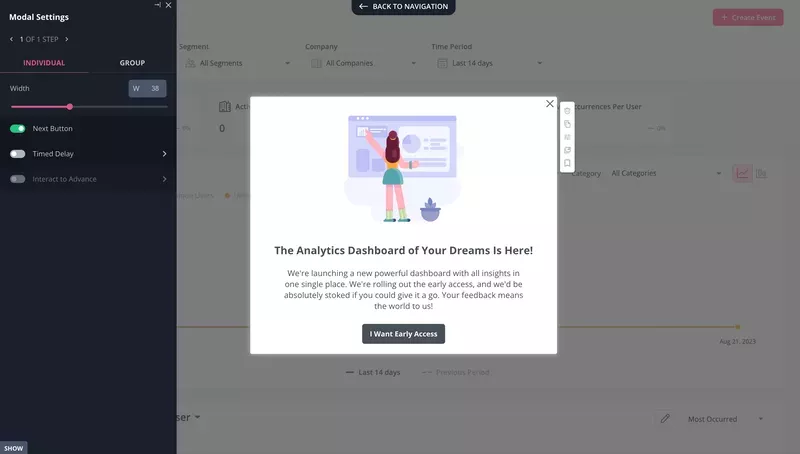
5. Create the feature launch marketing strategy
Just with new product launches, you need to market your new feature to ensure its adoption.
Want to know the good news?
This requires way less effort than pitching an unknown product to new prospects. That’s because you already have active users who find your product valuable, so you don’t need to persuade them that it’s worth giving you a shot.
Instead, you only need to show them how the new feature can change their lives for the better and teach them how to use it.
It’s good practice to announce new features via multiple channels. In-app messages are great for reaching active users, and emails can help you reach the inactive ones.
Back it up with social media posts and even press releases to catch the attention of potential customers as well. You never know; maybe your shiny new feature is exactly what they’ve been looking for.
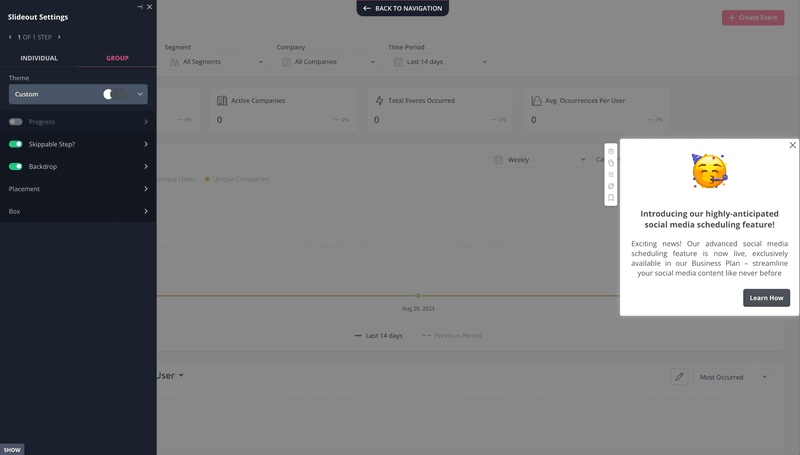
6. Analyze the success of the launch
To evaluate how successful the launch was, track user engagement with both the launch messages and the new functionality.
If there are issues with adoption and users don’t seem to be engaging with the new feature, analyze their engagement with the in-messages you’ve used for announcement and to aid feature discovery.
Userpilot’s flow analytics allow you to gain granular insights into the performance of your in-app messaging.
If users haven’t seen the messages, target them with more.
If they’ve seen them but haven’t engaged with the feature anyway, tweak the messages, A/B test them to choose more effective ones, and double down on your efforts to drive adoption.

7. Collect customer feedback and iterate
As soon as users start engaging with the feature, collect feedback to gauge their satisfaction.
This is dead easy with in-app surveys because you can trigger them contextually at the very moment the customer uses a feature. In this way, you can pick their brains on it when the experience is still fresh in their mind.
Start your surveys with quantitative questions, like ‘How easy is using Userpilot’s new AI feature?’.
Follow up with open-ended ones for more qualitative data. This will help you understand the why behind their initial response and gather ideas on how to improve the feature.
All that is left at this stage is to act on the feedback and repeat the process. Again and again.
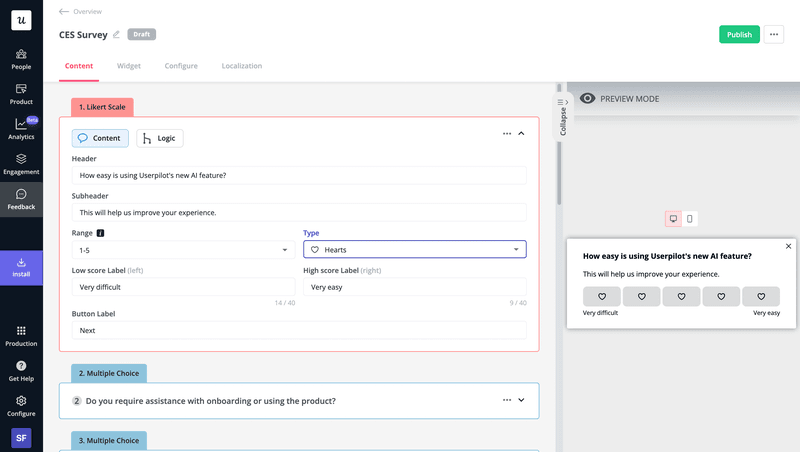
Tips for executing a successful product launch strategy
With the checklists ready, let’s now look at a few good practices for executing a perfect SaaS product launch.
Start with clear objectives behind product launches
When planning your launch, start by setting the goals you want to achieve.
These could be customer acquisition goals, like a certain number of sign-ups, adoption goals, or sales goals.
Having these in place will give your teams the necessary focus when working on the launch.
For your goals to be effective, they must be clear and measurable. Use a goal-setting framework like SMART or the Golden Circle model to structure the process.
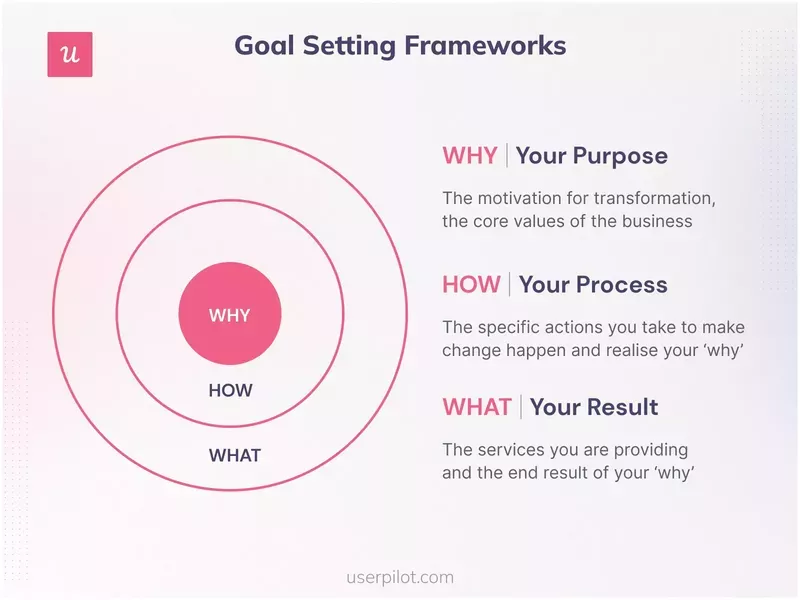
Involve customers in the product launch process as much as possible
It’s difficult to launch a successful product without involving your customers.
Initially, you need their input when defining and validating the product or feature idea.
As you’re working on the product, you need them for prototype and beta testing.
Finally, when the product is out, they can help you promote it through WOM and referrals.
Build a cross-functional team responsible for the launch
To successfully launch a product, you need a range of skills so building a cross-functional launch team is a must.
Who should be on the team?
- A product manager – to oversee all stages of the product development and launch process. Your SaaS may also have a product launch manager, but I feel you wouldn’t be reading the article if that is the case.
- A designer – to make the product technically sound, intuitive and user-friendly.
- A marketer – to help you with market research, craft the GTM strategy, and develop the marketing materials.
- A customer success or support manager – to develop support resources
- A salesperson – well, to sell…
Select the optimal time to launch a product/feature
Some launch times may be more optimal for your product than others.
How do you identify them?
For feature launches, use trend analytics to find the days when users are most active and launch on those days.
Of course, you should only launch when the product is ready. Launching a half-baked buggy product can backfire badly.
On the other hand, don’t drag your feet if you can see that your competitors are about to launch a similar feature and steal your first-mover advantage.
Seasonality is yet another factor to consider. For example, if you’re target audience is students, you won’t have much uptake during the summer or winter holidays.
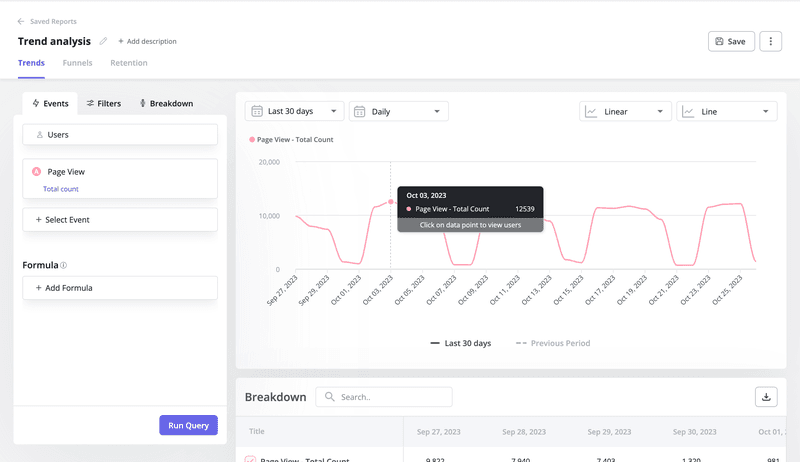
Monitor and adjust the product launch in real-time
Monitoring your product launch metrics in real-time allows you to adjust your campaign accordingly.
What metrics should you track?
Some examples include:
- Referral website traffic
- Demo bookings
- Visitor-to-signup ratio
- Customer Engagement Score (CES)
- Feature usage rate
- Product Hunt upvotes
It’s a good idea to put them all up on one analytics dashboard for easy access.
Conclusion
A good product launch checklist will guide your team through the process, ensuring that each part of the launch is executed properly.
If you’d like to see how Userpilot can help you at all stages of product launch, book the demo!







